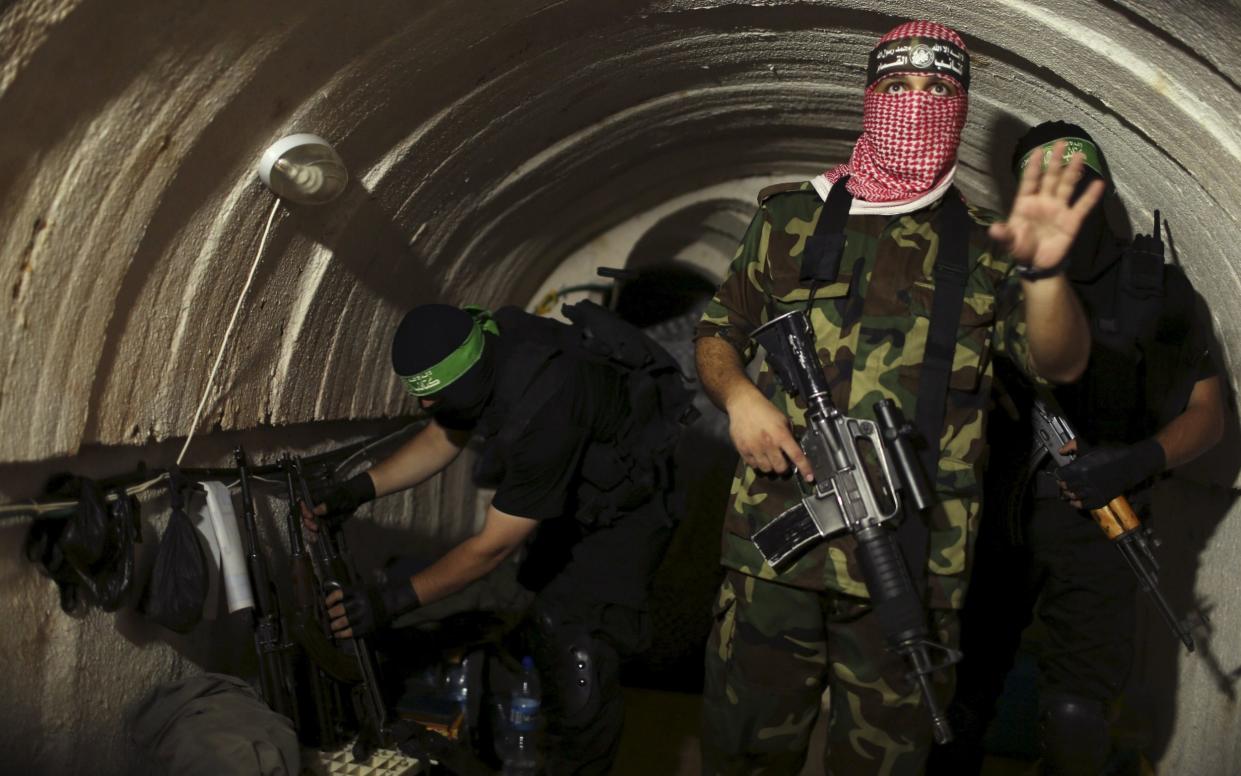Hamas terrorists used ‘hardwired phones’ to evade Israeli intelligence

American intelligence officials have explained to their European counterparts why they failed to anticipate Hamas’s assault on Israeli villages, which was reportedly planned on telephone lines in hidden tunnels.
The Oct 7 attacks were prepared entirely inside Hamas’s close-knit military wing, meaning they were not detected by Israel’s informants inside the group’s political ranks, Europe’s spy agencies were told.
Those behind the plot also avoided digital channels that could be cracked by US and Israeli spies, relying instead on face-to-face meetings and phone lines installed inside the system of tunnels beneath Gaza, sometimes known as the “Gaza Metro”.
Israel’s failure to uncover Hamas’s plans and thwart the attacks, despite having some of the most renowned intelligence capabilities in the world, has alarmed its regional and European allies.
Officials said intelligence gathering had relied too heavily on high-tech eavesdropping and suffered a lack of informants, leaving both Israel and its US allies unaware of the coming assaults, Le Monde reported.
The US briefing also concluded that Hamas had received no outside support for the attacks from Iran or its Lebanon-based ally, Hezbollah.
Meanwhile US officials separately told CNN that the attacks had been planned by a small Hamas cell that had managed to hide its preparations through old-fashioned counter-intelligence methods.
While large numbers of gunmen had been trained in advance of the assault, only a small inner circle knew what they were preparing for.
Hamas’s secrecy measures included in-person planning meetings and the rejection of digital communication tools in favour of hardwired telephones.
Some 1,500 Hamas gunmen poured across the border from Gaza early on Oct 7, overrunning army outposts and communities nearby. More than 1,400 Israelis died and at least 220 were taken hostage.
The planning cell waited until just before the attack to brief a larger group of fighters above ground about the specific operation.
While ground unit commanders had been trained for many months, and kept on alert, they were only informed of the specific plans in the days leading up to the operation.
“That’s how you compartment and keep something that’s tight,” one source told CNN.
Above-ground training was spotted, but it did not ring alarm bells. The thinking was “Oh they always train people like this. It didn’t look different,” the source said.
Hamas surprised by lack of response
Israeli intelligence gathering had also been undermined after large numbers of the armed forces had been relocated from the Gaza front to the West Bank.
Shin Bet, Israel’s internal security service, had been asked to concentrate its efforts on the security of the Jewish settlements there, rather than on the coastal enclave of Gaza.
American officials also told their European allies that Hamas had been surprised by the lack of reaction from the Israeli security forces after the attack and the time it took them to respond.
Those who planned the assault had not expected to be able to stay on Israeli territory for as long as they did, or to be able to take so many hostages back to Gaza.

